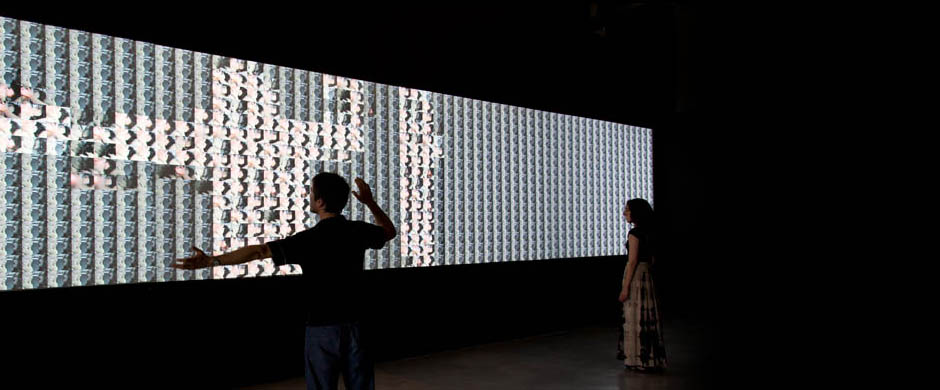 | IN THE LAB
| IN THE LAB

Rafael Lozano-Hemmer, Make Out, Shadow Box 8, 2008
Time-Based Media Art Conservation
Time-based Media artworks are characterized by having a durational element, such as sound, performance, light, or movement, that unfolds to the viewer over time via slide, film, video, software, or the internet. Since these artworks are subject to technical and technological obsolescence, it is often left to the conservator to identify, acknowledge, and respect the conceptual nature of these works. Technology-based art is considered to be more sensitive to damage, loss, misinterpretation, and incorrect installation than a traditional artwork, due to its very specific and sensitive relationship to time, space, and concept.
A very particular knowledge and skill set is needed to understand and analyze preservation challenges for electronic artworks. Damage or loss cannot be seen by simply examining the physical material and may not be immediately apparent. The emerging and fast-growing area of Time-based Media art conservation requires different approaches and welcomes applicants from various backgrounds.
The Mellon Time-Based Media art conservation curriculum at NYU [PDF], the very first of its kind in the U.S., uses a multi-disciplinary approach to address these objectives and is embedded in the conceptual framework of contemporary art conservation, already a strength of the program. Offering an overview course on time-based media technologies and their care in the first year of the program and advanced technological training during the second and third years of study, the program draws on a coalition of experts and specialists in the fields of computer science, engineering, and film and video preservation. Students may also choose from additional classes offered through other NYU graduate departments, such as the Moving Image Archiving and Preservation Program, Interactive Telecommunications Program, and Museum Studies.
Outside the classroom, area initiatives, like the Media Preservation Initiative at the Whitney Museum of American Art also contribute to the resources available to students. Mellon-funded summer Directed Work-Placements and the fourth-year capstone project provide additional practical experiences and opportunities for students to work in leading institutions, such as as The Metropolitan Museum of Art, the Guggenheim Museum, the Museum of Modern Art, and the Whitney Museum of American Art in New York.
The Time-Based Media art conservation curriculum is generously supported by the Andrew W. Mellon Foundation.
Mellon Time-based Media Conservation Program Outline
This is only a generalization of the four-year program under the time-based media specialization. Individual student registrations may vary.
22 courses are taken over three years: 15 in conservation and 7 in art history.
First Year
Fall Semester
- Technology & Structure of Works of Art I
- Material Science of Works of Art I
- Technology & Structure of Works of Art III
- Foundations I in Art History
Spring Semester
- Technology & Structure of Works of Art II
- Material Science of Works of Art II
- Principles of Conservation
- Contemporary Art History Elective
Winter Intersession
- Art With A Plug: Essentials of Electrics, Electronics, and Control Engineering
Summer 1
- Directed Work-Placement, participation in an IFA-sponsored or co-sponsored archaeological dig, conservation projects at Villa La Pietra, Florence, Italy
Second Year
Fall Semester
- Instrumental Analysis I
- Introduction to Objects Conservation
- Introduction to Programming/ Digital Preservation
- Art History Elective
Spring Semester
- Ethics & Authenticity, Acquisition & Documentation
- Advanced Conservation Elective
- Art History Elective
Summer 2
- Directed Work-Placement, conservation projects at Villa La Pietra, Florence, Italy
Third Year
Fall Semester
- Exhibition & Installation
- Advanced Conservation Elective
- Art History Elective
Spring Semester
- Conservation of Audiovisual Art
- Art History Elective
- Directed Research Towards the M.A. Thesis
Summer 3
- Directed Work-Placement, conservation projects at Villa La Pietra, Florence, Italy
Fourth Year
Fall Semester
- Capstone Placement
Spring Semester
- Capstone Placement (continued)
Public lectures in TBM art conservation
Attend upcoming events and watch video archive of previous lectures.